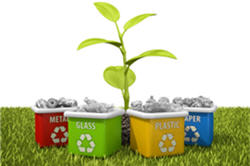Alternative lighting is emerging as a potent method to combat the energy crisis. Light-emitting diode (LED) lighting technologies could provide an innovative way to save energy and make wasteful lighting obsolete.
The U.S. Environmental Protection Agency (EPA) released its Healthy Indoor Environment Protocols for Home Energy Upgrades to better integrate health protections into energy efficiency programs.
Increasing competition and reducing the role of the state in Greece’s energy sector could make a significant contribution to the country’s economic recovery, according to a review of Greek energy policies published by the International Energy Agency (IEA).

Engineering researchers at the University of Arkansas are developing an anti-icing system that could make airport runways safer and less expensive to maintain during winter months.
Building on President Obama’s historic national program, the U.S. Environmental Protection Agency (EPA) and the U.S. Department of Transportation (DOT) officially unveiled their joint proposal to set stronger fuel economy and greenhouse gas pollution standards for model year 2017-2025 passenger cars and light trucks. Cars, SUVs, minivans, and pickup trucks are currently responsible for nearly 60 percent of U.S. transportation-related petroleum use and greenhouse gas emissions.
Explaining the purchase of a hundred pounds of dry ice to the authorities might be a bit awkward for some people; however, for Ari Jumpponen, associate professor of biology at Kansas State University, it's just another day as a scientist.
Computational modeling that examines evidence of how hominin groups evolved culturally and biologically in response to climate change during the last Ice Age also bears new insights into the extinction of Neanderthals. Details of the complex modeling experiments conducted at Arizona State University and the University of Colorado - Denver will appear in the December issue of the journal Human Ecology.

Emissions regulations do have an environmental impact, according to a long-term study of acidic rainfall by researchers at the University of Illinois at Urbana-Champaign.
The rapid, large scale coastal development underway in the Middle East must be better planned and managed to avoid aggravating degradation and losses in the fragile marine ecosystems shared by eight Gulf countries – Bahrain, Kuwait, Iran, Iraq, Oman, Qatar, Saudi Arabia, and the United Arab Emirates – warns a new report by the United Nations University (UNU).
A new report by Duke University researchers offers several health and environmental measures for North Carolina lawmakers to consider as they debate legalizing horizontal drilling and hydraulic fracturing for natural gas.
Extremophiles that happily live in seemingly harsh environments can inspire useful chemical processes, and their enzymes could help make chemical processes in industry greener.
Technology with the ability to detect more than 1,000 colors, the hyperspectral camera is being used to diagnose contaminants and other environmental hazards in real time.
A new study reveals that the release of treated municipal wastewater – even wastewater treated by the highest-quality treatment technology – can have a significant effect on the quantities of antibiotic-resistant bacteria, often referred to as "superbacteria," in surface waters.
Researchers are now developing a solar panel composed of nano-antennas instead of semiconductors.
The sentence is the longest handed down by a California federal judge in a hazardous waste case.
Researchers say there is overwhelming evidence that non-therapeutic use of antibiotics contributes to antibiotic resistance.

If you haven’t taken the initiative to recycle – today’s the day to start with Nov. 15 being America Recycles Day (ARD) and all.
Air pollution is changing our environment and undermining many benefits we rely on from wild lands, threatening water purity, food production, and climate stability, according to a team of scientists writing in the Ecological Society of America's Issues in Ecology.
Ancient rocks embedded in the West Antarctic ice sheet could help University scientists improve sea level predictions.
Policies to protect the global climate and limit global temperature rise offer the most effective entry point for achieving energy sustainability, reducing air pollution, and improving energy security, according to an article published in the latest issue of Nature Climate Change.